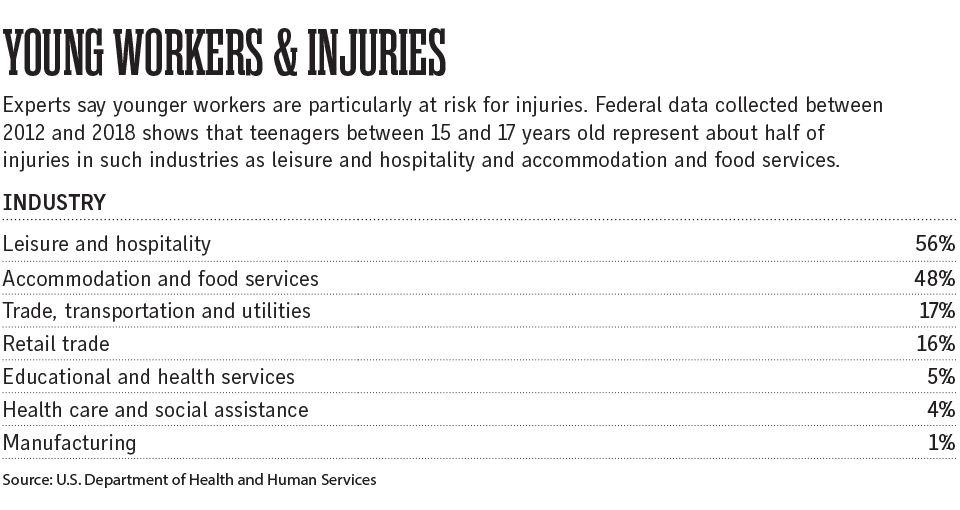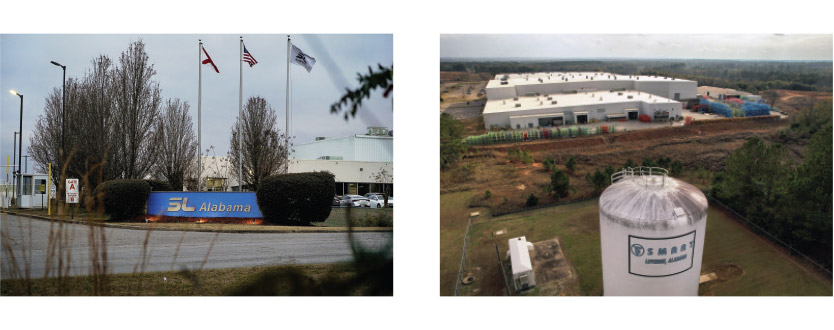Teen worker safety practices under scrutiny
Reprints
Employers that hire workers ages 14 to 17 years must comply with a patchwork of safety regulations that vary sharply by jurisdiction, as some states take steps to loosen restrictions on such employment.
Meanwhile, federal agencies are stepping up their focus on the unsafe working conditions and exploitation that many younger workers face.
On March 8, Arkansas Gov. Sarah Huckabee Sanders signed a law that rolled back requirements that the state verify the ages of workers under 16 and provide them with certificates permitting them to work. And on April 18, the Iowa Senate passed a controversial bill that would allow such younger employees to work longer hours and would eliminate existing rules concerning the serving of alcohol in establishments that employ young workers.
Other states are considering or have considered changes that would make it easier for employers to hire underage workers, drawing opposition from children’s rights advocates who say the changes would endanger such workers.
Yet some experts say workers under 18 years old are still protected, given federal regulations outlined by the U.S. Occupational Safety and Health Administration and Department of Labor’s Wage and Hour Division.
Arkansas “just stopped requiring the work permits … but all the federal safety and health requirements are still in place,” said Richard Fairfax, Frederick, Maryland-based principal consultant for the National Safety Council. “The only thing that has changed is the state saying, ‘We’re not going to require people to get a work permit.’”
However, some experts say holes in safety requirements about hiring young people remain and that any effort that reduces oversight is detrimental. Many employers are unaware of rules specifying whom they can hire, and often it’s not until an accident occurs that they understand the implications of hiring young workers, they say.
Unscrupulous employers — many hiring underage immigrants — are the target of recent federal efforts to curb unsafe working conditions for young workers. And state-level changes have drawn the DOL’s renewed attention.
The DOL and the U.S. Department of Health and Human Services on March 24 announced a partnership between the DOL’s Wage and Hour Division and HHS’s Administration for Children and Families to “deepen information-sharing, coordination, training and education” addressing what both departments have called the exploitation of young workers, including child labor trafficking.
CLICK IMAGE TO ENLARGE

Beginning this month, the DOL is offering webinars for employers, parents and young workers regarding federal child labor regulations. Seema Nanda, solicitor of the DOL, said in a statement to Business Insurance that “child labor protections apply in all states, and no state has the ability to limit these provisions.”
“The Department will vigorously enforce child labor protections in all states and is closely monitoring state action in this area,” she said.
Labor law experts say the renewed focus is timely but not new.
“There are a lot of regulations out there that have been on the books obviously for over 60 years, and certainly they haven’t really changed dramatically,” said Ray Perez, Atlanta-based attorney in the safety and health practice group at Jackson Lewis P.C.

While OSHA dictates workplace safety regulations for all workers, the Wage and Hour Division addresses safety for workers younger than 18. The division lists several duties prohibited for younger workers for safety reasons. “A lot of these minors don’t know the law (and) they don’t have the ability to contact anyone to file complaints,” Mr. Perez said.
Scott Hecker, Washington-based senior counsel with Seyfarth Shaw LLP, said there’s “tension” between federal and state approaches to the issue, as “certain states are rolling back or loosening up some of the restrictions for child or teen labor based on the tightness of the labor market.”
“It’s hard for employers to toe those lines, to be aware of the obligations under both federal and state (systems),” he said.
Complicating workplace safety is the seasonality of some younger workers, said Jennifer Maclachlan, Sandwich, Massachusetts-based member and past-chair of the American Industrial Hygiene Association’s Committee on Teen Workplace Health and Safety. She said safety training for both employers and employees is the No. 1 issue.
Employers “just don’t think about it. They’re just so busy,” Ms. Maclachlan said. “I’m on Cape Cod, Massachusetts, and our population triples during the summer, and people get so busy and a lot of these businesses are seasonal. And I think they just think, ‘I’m going to train this teen worker to do the job,’ and they don’t incorporate safety into it.”
Mr. Fairfax, of the National Safety Council, said the number of regulations from different entities — state and federal — can be confusing for employers.
“Some of them, legitimately, aren’t aware,” he said, adding that family businesses tend to fall in this category. For example, owners of agriculture or manufacturing businesses can employ their own children “although they can’t use any heavy equipment,” he noted.
“A lot of it’s just a lack of understanding and a lack of information,” he said.
Greg Ripple, a Chicago-based shareholder in the labor & employment practice at Vedder Price P.C., said employers that aren’t paying attention to guidelines — especially now — are more at risk than ever.
“They need to have a system in place where they are making sure that those minors and the company are complying with both the (federal) industrial rules and state rules and making sure they have that kind of compliance and training,” he said.
WORK PROHIBITIONS
Under U.S. Department of Labor guidance, workers 15 and under are prohibited from:
- Working in most occupations involving transportation, construction, warehousing, communications and public utilities.
- Working in mining; workplaces where goods are manufactured or processed; in freezers or in meat coolers.
- Operating or tending any power-driven machinery, except office machines.
- Working in baking operations.
- Sign waving or door-to-door sales activities.
- Working from ladders or scaffolds.
Workers under the age of 18 may not perform duties deemed “hazardous” by the DOL, including:
- Operating most machinery, including in bakeries, woodworking, construction, paper manufacturing, metalworking, and meat and food processing.
- Driving a motor vehicle or working as an outside helper on motor vehicles, with some exceptions for 17-year-olds.
- Forklift operations.
- Mining.
- Manufacturing of brick, tile and related products.
- Wrecking, demolition and ship-breaking operations.
- Roofing operations.
- Trenching and excavation operations.